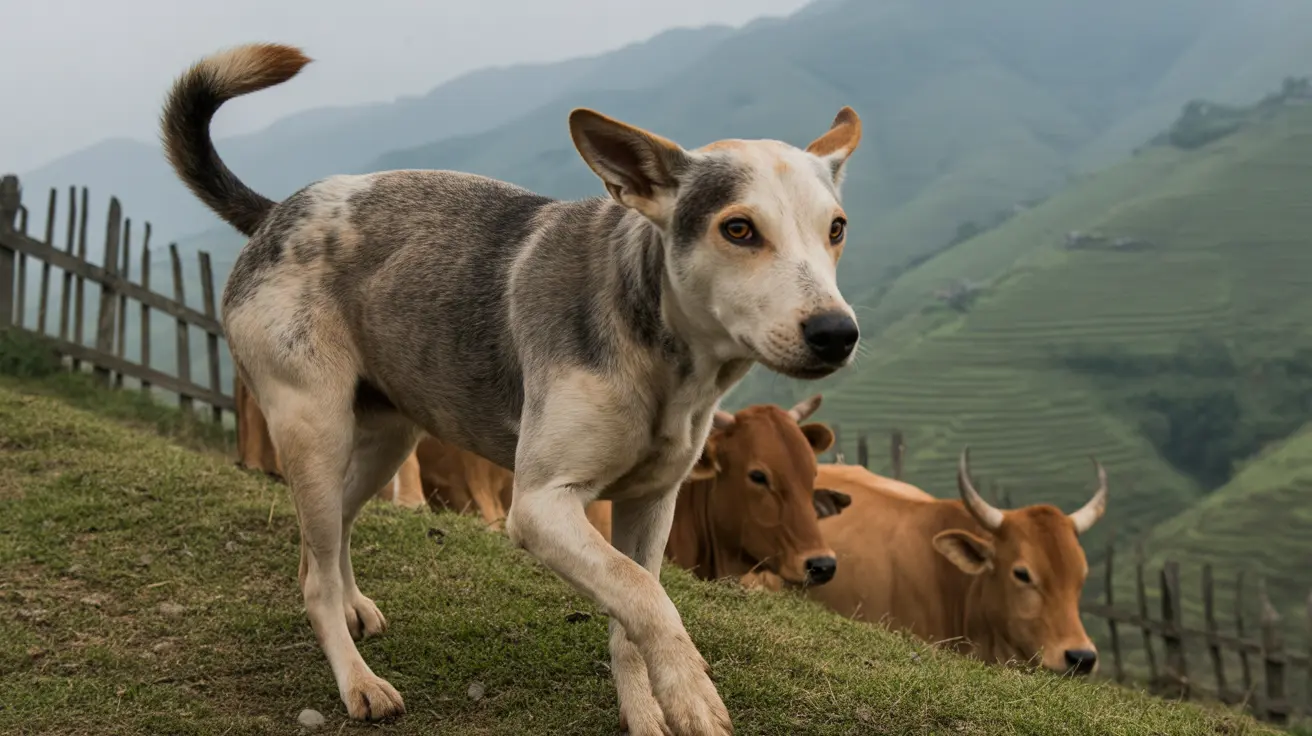Historical Origins and Cultural Significance
The Hmong Dog originated in the mountainous regions of northern Vietnam, where it developed alongside the Hmong people who migrated from southern China during the 1800s. As one of Vietnam's "Four Great National Dogs," this breed holds a prestigious position in Vietnamese culture and continues to play vital roles in Hmong communities.
These dogs traditionally served as hunters, herders, and guardians, adapting perfectly to the challenging terrain of provinces like Hà Giang and Lào Cai. Their natural bobtail is believed to have emerged from ancient Chinese breeding lines, possibly mixed with indigenous jackals.
Physical Characteristics and Appearance
Hmong Dogs are medium-sized, muscular canines with several distinctive features:
- Height: 18-22 inches at the shoulder
- Weight: 35-57 pounds
- Natural bobtail ranging from completely tailless to 6 inches long
- Double coat with various color possibilities
- Cat-like facial features with expressive eyes
- Upright, triangular ears
Temperament and Personality Traits
These intelligent and devoted dogs exhibit several key behavioral characteristics:
- Exceptional loyalty to their family
- Strong protective instincts
- High energy levels requiring regular exercise
- Natural hunting and herding abilities
- Wariness toward strangers
- Strong territorial nature
Health and Care Requirements
Hmong Dogs are renowned for their robust health and impressive longevity, typically living 15-20 years. Their natural hardiness makes them relatively low-maintenance in terms of veterinary care, though they still require:
- Regular exercise and mental stimulation
- Consistent training and early socialization
- Proper grooming for their double coat
- Secure fencing due to their high prey drive
- Balanced nutrition suitable for active breeds
Ownership Considerations and Costs
While Hmong Dogs are relatively rare outside Vietnam, interest in the breed continues to grow. Prospective owners should expect to invest $500-$3,000, depending on location and availability. Additional considerations include:
- Finding reputable breeders or breed clubs
- Understanding export regulations
- Preparing for high exercise requirements
- Creating appropriate living spaces
- Committing to proper training and socialization
Frequently Asked Questions
What is the origin and history of the Hmong Bobtail Dog breed?
The Hmong Dog originated in northern Vietnam, developing alongside the Hmong people who migrated from southern China in the 1800s. The breed served as a hunting, herding, and guardian dog, adapting to mountainous terrain and becoming one of Vietnam's most respected native breeds.
How big do Hmong Bobtail Dogs typically grow and what are their key physical traits?
Hmong Dogs typically stand 18-22 inches tall and weigh 35-57 pounds. They're characterized by their natural bobtail, muscular build, double coat, and cat-like facial features with expressive eyes.
What kind of temperament and behavior can I expect from a Hmong Dog?
Hmong Dogs are intelligent, loyal, and protective companions with high energy levels. They form strong bonds with their families but can be reserved with strangers. They require consistent training and early socialization due to their strong hunting instincts.
How should I care for and exercise a Hmong Bobtail Dog to keep it healthy and happy?
These dogs need regular physical exercise and mental stimulation. Provide secure fencing, consistent training, proper grooming for their double coat, and a balanced diet. Their natural hardiness makes them relatively low-maintenance health-wise.
Where can I find a Hmong Bobtail Dog for sale, and what does owning one involve?
Hmong Dogs are primarily available through specialized breeders or breed clubs, with prices ranging from $500-$3,000. Ownership requires commitment to exercise, training, and providing appropriate living space. Consider working with reputable organizations to ensure ethical acquisition.






